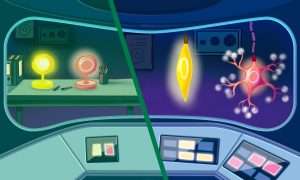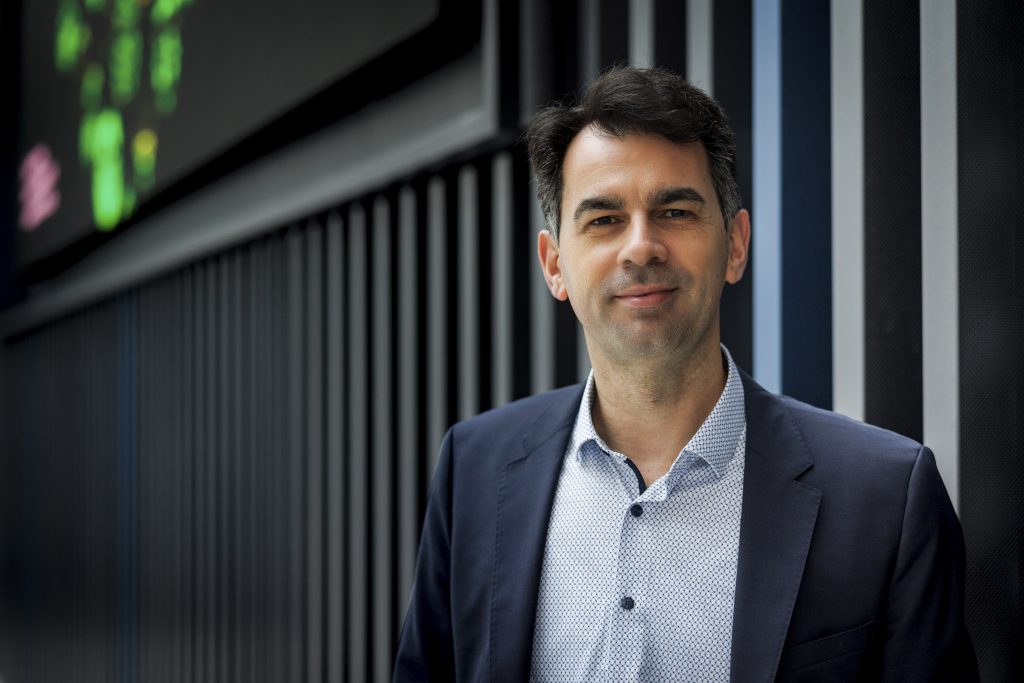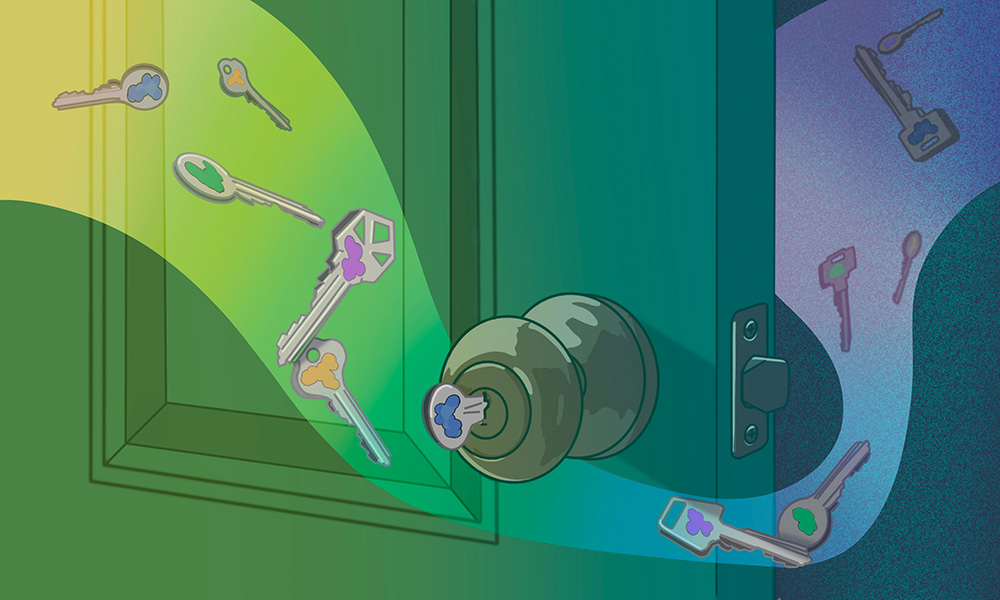Read the latest Issue
Picture Release

Cell division is one of the most fundamental processes of life. It explains how one cell can give rise to an organism of several million cells, it determines the shape of different life forms and it underpins our body’s capacity to heal when injured. Often we only notice how important cell division really is when it goes wrong and results in cancer or other diseases. But apart from being crucial for biology, cell division is also a very beautiful process as these images taken by Joël Beadouin in the group of Jan Ellenberg at the European Molecular Biology Laboratory (EMBL) show. The pictures were taken through a confocal microscope and show the different steps of cell division in a human cell magnified approximately 650 times.
From left to right: When not dividing the genetic material of a cell (DNA in blue) is found loosely in the nucleus, where a second copy of it is made in preparation for division. At the onset of division the DNA condenses into distinct chromosomes, the nucleus breaks down and protein filaments called microtubules (green) form a spindle apparatus. The spindle aligns the chromosomes in the middle of the cell and in the next step pulls a copy of each chromosome towards the opposite poles of the cell. After this division of the genetic material, or mitosis, is completed the rest of the cell divides. A band formed by another type of protein filaments, called actin (red), squeezes the mother cell in half to create two identical daughters. The whole process takes approximately 90 minutes.
The images were taken as part of Mitocheck, an international research project funded by the European Commission, that tries to identify and characterize all the genes necessary for cell division in human cells. For more information visit www.mitocheck.org.







